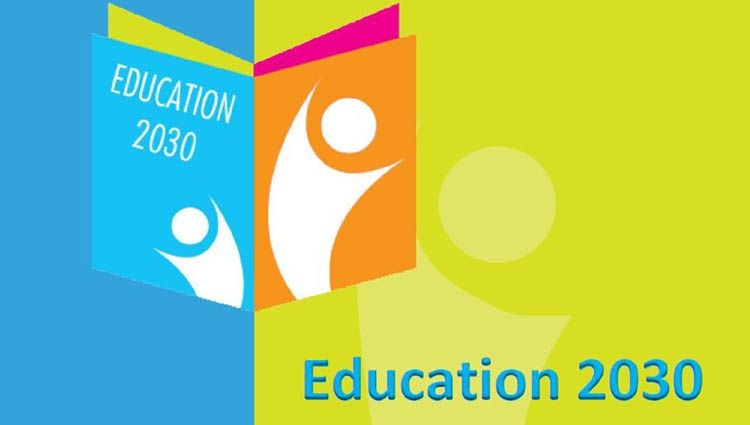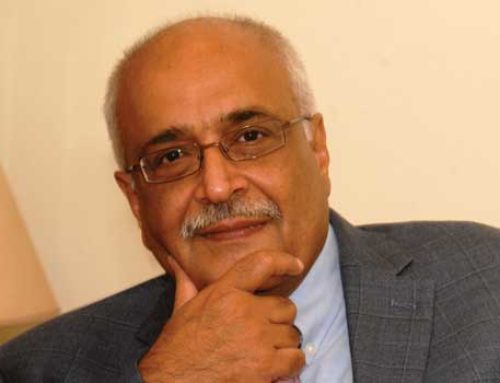Md. Mostafizur Rahaman
The agenda of Sustainable Development Goals as a whole entail transformation in global development, including reforms in global financial systems and greater transparency and accountability. The goal and the setting of targets are is clear but they are yet define the number of indicators. It does not give lead us to reach the goals. As part of the SDG, the Education 2030 agenda adopted in 2015 provides for a new international vision for education. Its main objective is to ‘ensure inclusive and equitable quality education and promote lifelong learning opportunities for all’.
Education for All targets were not reached in many low- and middle-income countries in the past 15 years and inadequate resource mobilisation was a major reason for that. For low-income countries, in particular, the gap constitutes more than 40 per cent of he total yearly cost. Depending on the previous lesson, it is known, as the world moves towards the implementation of the education goal and targets. But it is fundamental to have sufficient, good-quality financing and good intentions and political commitments.
It is estimated that an additional $1.4 trillion in annual public spending in low- and middle-income countries will be required to achieve the full SDG agenda, according to an updated analysis about to be published by the Sustainable Development Solutions Network. For education, according to the Global Education Monitoring Report, reaching universal pre-primary, primary and secondary education — of good quality — in low and lower middle-income countries will require a total of $340 billion a year. This will require low-income countries to spend 6.56 per cent of the gross domestic product on education which will still leave a funding shortfall of $39 billion — meaning that external assistance must work alongside domestic commitments to achieve the vision of education which governments have already pledged to do.
How to finance the post-2015 education agenda is a critical issue. Political commitment without financial backing does not work, as history shows. But the question who will bear the costs of education and how is not at all simple to answer. In recent periods, private-sector players, including service providers, CSR, and foundations, are active in financing. But they could not come out of the charity concept. They do not seem to be predictable donor in education financing.
On another footing, the manner of financing that is increasingly used in the international cooperation, ie, results-based financing, has a strong effect on the way government plans, implements and produce results in the education sector. The selection of indicators to go with the global goal and targets of the post-2015 education agenda will also come in to influence the discussions at the country level, including financing.
In Bangladesh, the government has achieved a considerable success in education, especially in primary education in the past 15 years. Bangladesh has the largest primary education system in the world, covering a total of 1,08,537 schools of 15 broad categories with 1,95,52,979 students where 4,82,884 teachers are engaged in teaching. A commendable progress in access and gender equity is the major achievements of these efforts.
As signatory to education-related international treaty, Bangladesh expressed commitment to ensuring adequate allocation (20 per cent of the national budget or 6 per cent of the gross domestic product) in education. But the allocation for primary and secondary education in Bangladesh is less compared with the figures for other developing countries. Even it is less among the SAARC countries. While the size of national budget of Bangladesh is getting fattened every year (about Tk 3,00,000 crore in 2015–2016 financial year), education budget is going down compared with the national budget and has maintained the downward trend in recent years. Our present allocation is 1.8 per cent of the gross domestic product while the Muscat agreement recommended 4–6 per cent of the gross national product, and 15–20 per cent of the total government spending; we are, therefore, much lower than the global standard in investment in education.
This budget amount is not alone for education. It has another shareholder, which is technology. Although the education budget is increasing in amount, it is inadequate to cover all of its necessities to ensure quality education for all. The lion’s share of the allocation is spent on the salary, infrastructural development, management purposes, etc. Very little of the budget is left for quality development of education, including effective education materials, teacher training, library and research, etc. It is important to allocate adequate resources for education and to ensure its effective use for quality development of education. There is no alternative to education to become a middle income country. Otherwise, it will increase discrimination.
Without a financing roadmap, it would be difficult to achieve the Education 2030 agenda which are strongly linked to our national targets such as becoming a middle-income country by 2021 and a developed country by 2041. Sustained resource mobilisation will, thus, be a major issue in the years to come, but the allocation and management of available resources will also require substantial attention of the planners. The government should address difficult issues of efficiency, equity and management of public resources.
The government also has to increase revenue collection, introduce education cess and to attract foreign investments. Moreover, the government has to use foreign assistance in the pipeline in achieving SDG 4. It requires political will for the implementation of SDGs, particularly the Education 2030 agenda.
The government should align the SDGs with the national planning and policy process, defining implementing authorities and mobilizing internal resources for the required funds to implement the Education 2030 targets. For a better coordination, the government may form an inter-ministerial body under the Prime Minister’s Office and a number of task forces may be formed under the body involving both government and non-government experts. At the same time, efficiency should be ensured in using concessional foreign funds, boosting private and foreign investment as well as consolidating the present remittance inflows.
The government has recently engaged with Global Partnership for Education. Furthermore, the government should make a space for the private sector to invest in education. The private sector may invest in education directly in the name of corporate social responsibility. So, efforts should be combined including the government, donors and the private sector to achieve Education 2030.
The task ahead is not only to mobilise additional financing for education but also to spend it more effectively. At the moment, education financing is not sufficiently benefiting those most in need — the poorest and the most marginalised learners. We need to target our aid to tackle the major bottlenecks in equity and quality and avoid aid fragmentation. Domestic budgets need to be spent more effectively and we need to work together around a common understanding of the results for long-term, not short-term, wins.
Md Mostafizur Rahaman is a development activist.[:]






